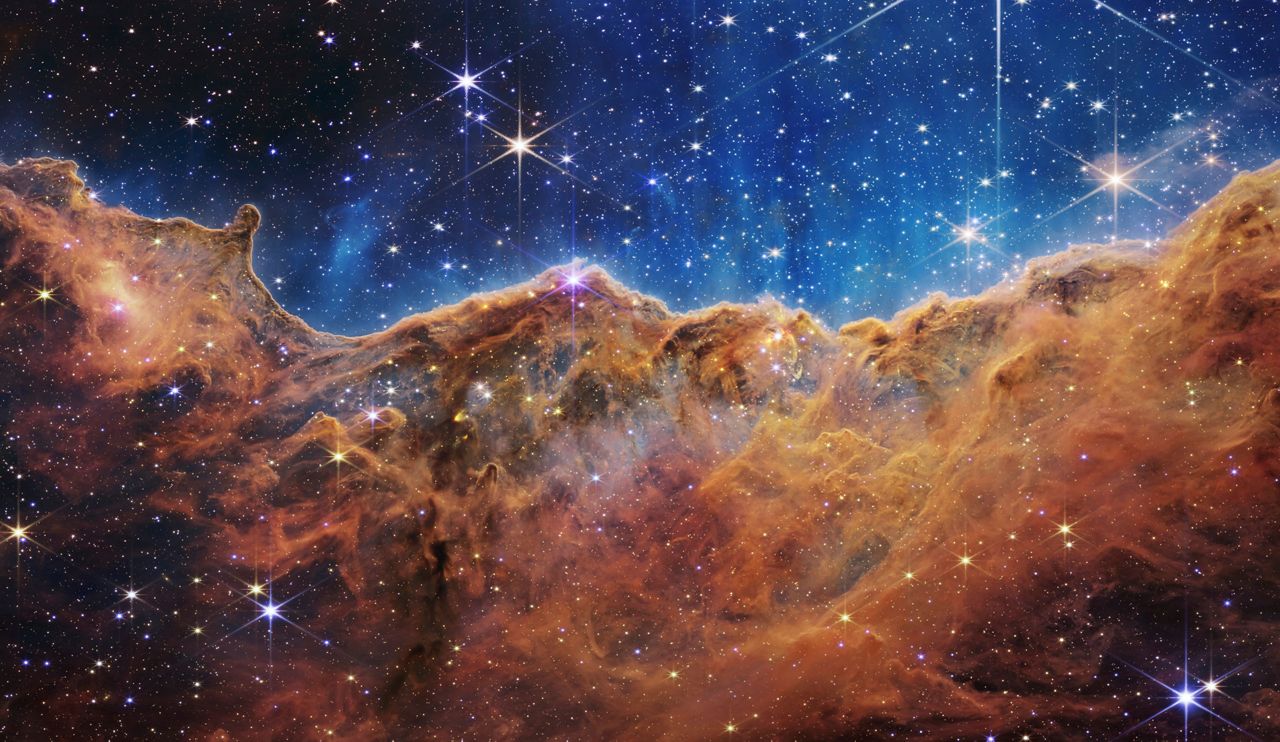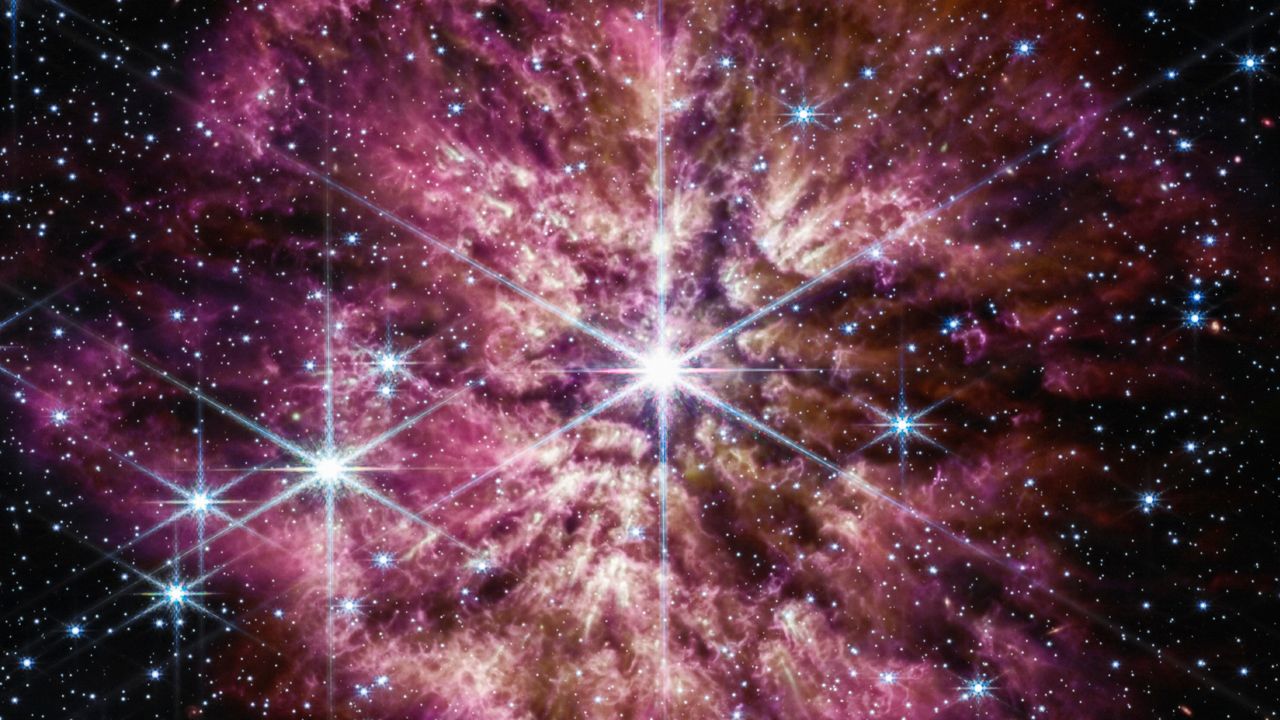AUSTIN, Texas — Seeing a star at the South by Southwest Conference & Festivals in Austin, Texas, is not uncommon, but this was light-years from that experience.
During a March 14 keynote address called “Unfold The Universe: The James Webb Telescope,” an all-female panel of scientists unveiled the latest image captured by the largest and most complex observatory ever launched into space.
The image is a Wolf-Rayet star in the Sagittarius constellation, roughly 15,000 light-years from Earth.
“The light from that star has been traveling through space for about 15,000 years, 15,000 light-years away, until it hit the detectors on the telescope,” said Dr. Amber Straughn, astrophysicist at NASA’s Goddard Space Flight Center in Greenbelt, Maryland. “The material that you’re seeing around the central star that looks like dust – is dust.”
“At the end of a star’s life, they shed their outer material, their outer layers into the rest of the universe,” Straughn continued. “I think this is one of the most beautiful concepts in all of astronomy. This is Carl Sagan’s stardust concept. The fact that the iron in your blood and the calcium in your bones was literally forged inside of a star that exploded billions of years ago.”
A partnership between NASA, the European Space Agency and the Canadian Space Agency, Webb launched on Dec. 25, 2021, and released its first full-color images and data on July 12, 2022. Fourteen countries took part in its creation and launch.
“One of the primary reasons we built the telescope the way we did was to be able to look back in time and see the very first epoch of galaxies that were born in the Big Bang, right after the Big Bang,” Straughn said. “We’re talking about looking back in time over 13 and a half billion years to see a part of space that we’ve never seen before. The galaxies that we’re finding in the very early universe are much bigger and much brighter than we expected.”
The telescope, commonly referred to as JWST, is just getting started. It is projected to provide images and data for another 20 years.
“We’re seeing things that we’ve never seen before, and that’s bringing out the curiosity and challenges we have as scientists,” said Dr. Stefanie Milam, planetary scientist at NASA’s Goddard Space Flight Center. “Why did that happen? How did that happen? What’s making that happen? What’s the evolution of this process? And what can we learn from it? I think this first couple of years of science with JWST is going to open to huge new questions and challenges that we have ahead of us.”

One of the more interesting questions to come up during the address concerned the image colors from the telescope scientists “choose to depict.”
“We have an infrared telescope and not a telescope that operates at wavelengths of light that you could see — so visible light, the way the Hubble Telescope does,” Milam said. “In order for us to understand and study any of these given objects at these longer wavelengths of light, which our eyes are not sensitive to, we hone in on colors and we label those colors to define a given physical process or chemical process so we can study those details in ways that our eyes couldn’t actually see.”
Besides the scientific information the telescope is already revealing, it’s hoped JWST provides people with a sense of wonder and curiosity in a world where strife, war and political turmoil dominate the headlines.
“I think astronomy is for all of us. I think it really does show that these beautiful images in astronomy are here to inspire us, to think outside of ourselves and to think bigger,” Straughn said.



